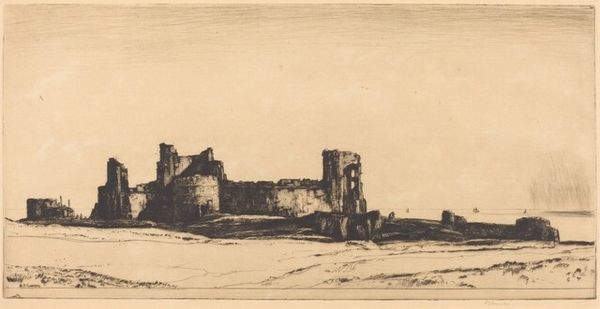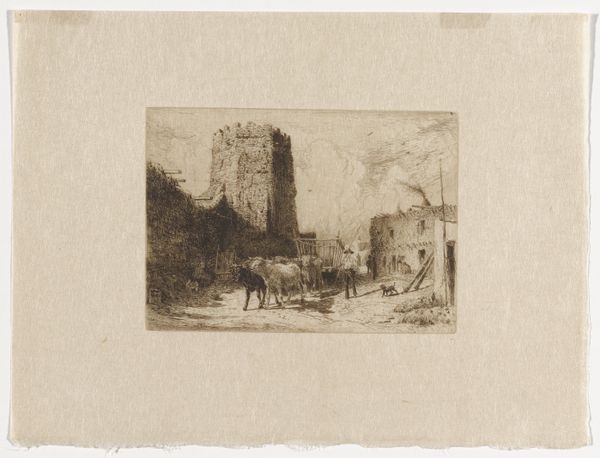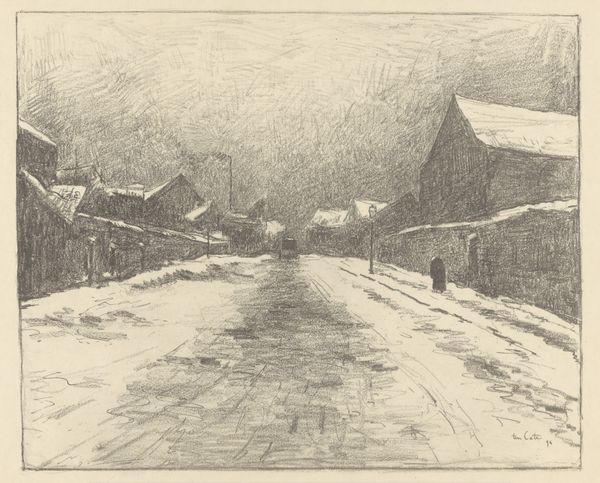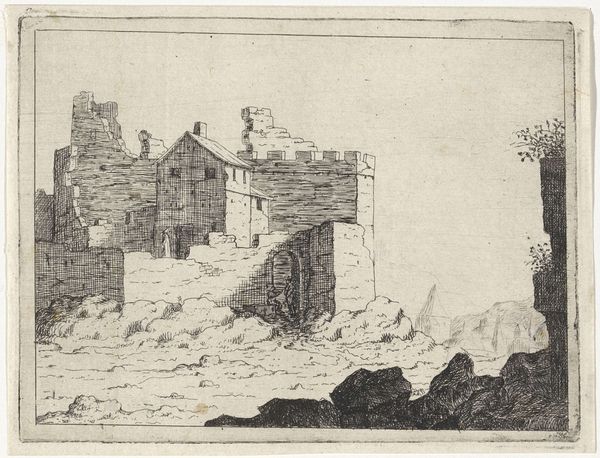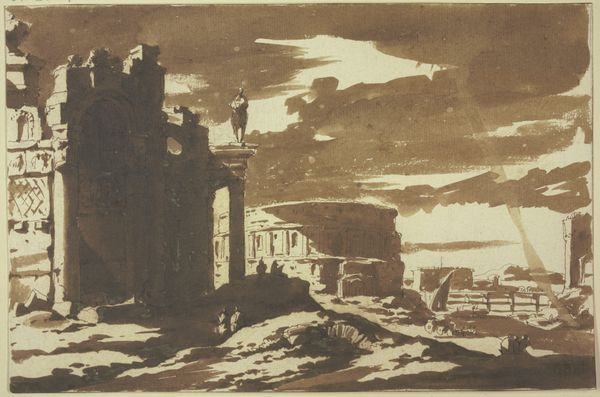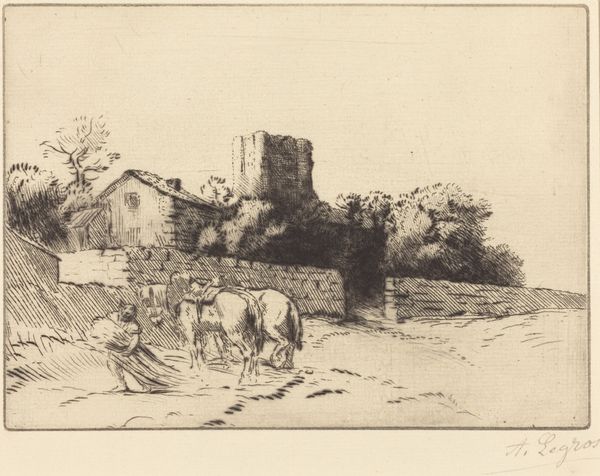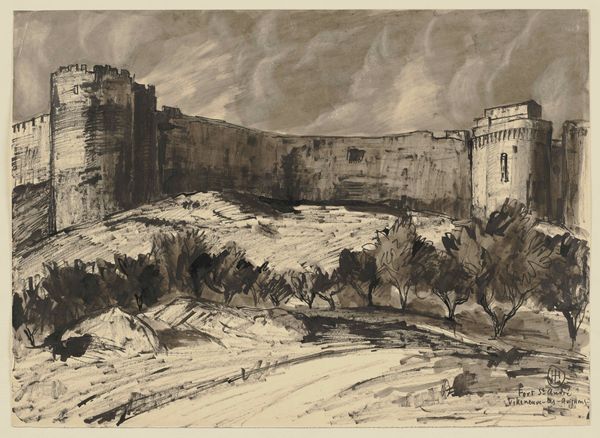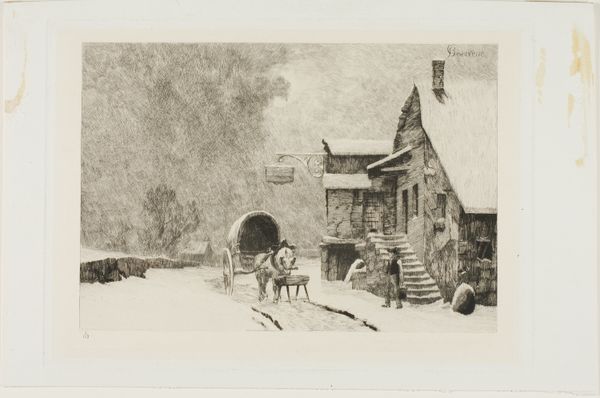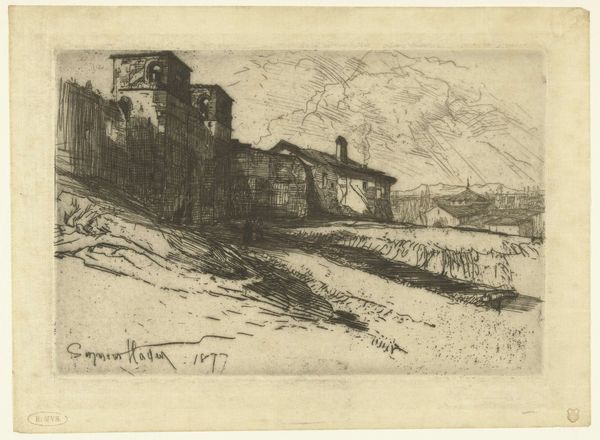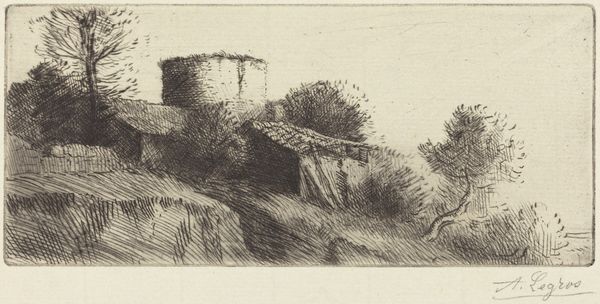
drawing, paper, ink, architecture
#
drawing
#
landscape
#
paper
#
ink
#
architecture
Copyright: Public Domain
Curator: Hermann Lismann’s drawing, “Carpineti castle near Canossa,” employs ink on paper to capture this architectural subject, held here at the Städel Museum. Editor: It’s stark. A palette of near-monochrome that evokes a feeling of winter desolation. The skeletal trees only enhance the sense of cold. Curator: That barrenness feels incredibly pertinent to how castles can signify both power and vulnerability through the history they invoke and the ideologies that erected them, especially considering its proximity to Canossa. It conjures reflections on shifting powers and historical trauma. Editor: Absolutely. The castle itself is a fascinating motif. Elevated above the landscape, architecture acts as a potent symbol. It suggests, simultaneously, aspiration, dominance, even fragility. What do the castle and its cultural status mean? How do these structures of supposed refuge ultimately fail to fulfill the symbolism implicit to the community surrounding them? Curator: I think understanding the geographical importance of that specific castle adds layers to this analysis. Castles stand as focal points, often built atop contested land, becoming stages for struggles over access and resources. Lismann has not just captured a pretty picture; it hints at geopolitical realities. Editor: Yes, and the monochromatic rendering almost mythologizes the image, adding to its symbolic heft. It speaks to this persistent fascination and the heavy significance we’ve laid on architecture as an enduring statement of human ambition or folly, maybe? Curator: Or perhaps resilience? There's a strange beauty here, the way that something endures. And maybe it has a symbolic weight of resistance—not in an idealogical form, perhaps, but a quiet presence despite its fragility. Editor: Ultimately, though, it reminds us that symbols shift over time. The iconography inherent is neither stable, singular, or objective, but actively changes with its historical present. What does it say of our present to be viewing an icon of refuge and safety as such, and rendered with such gloom? Curator: It challenges our understanding, which is, I think, vital in engaging with historical narratives and their role in understanding contemporary contexts. Editor: Indeed. The picture lingers as a symbolic enigma that resists simplistic interpretation.
Comments
No comments
Be the first to comment and join the conversation on the ultimate creative platform.

